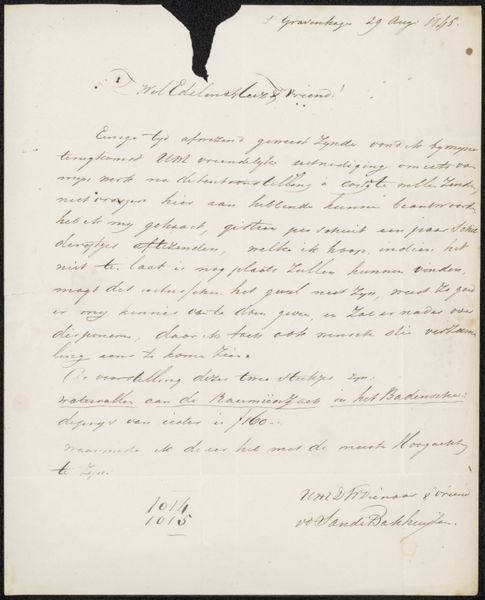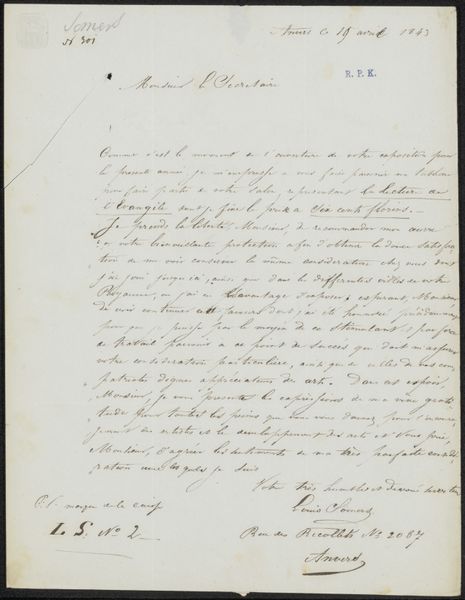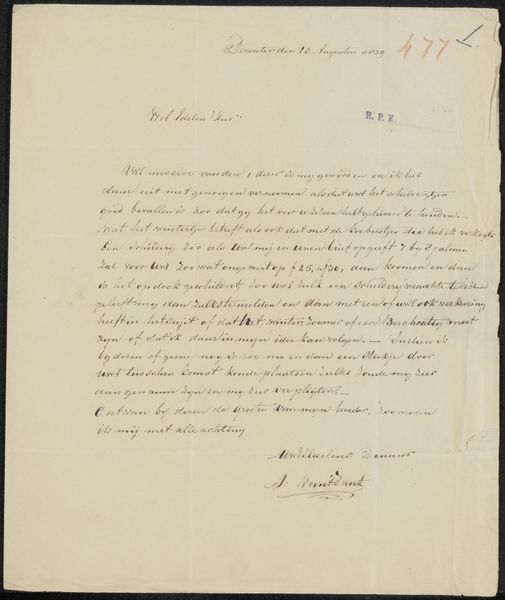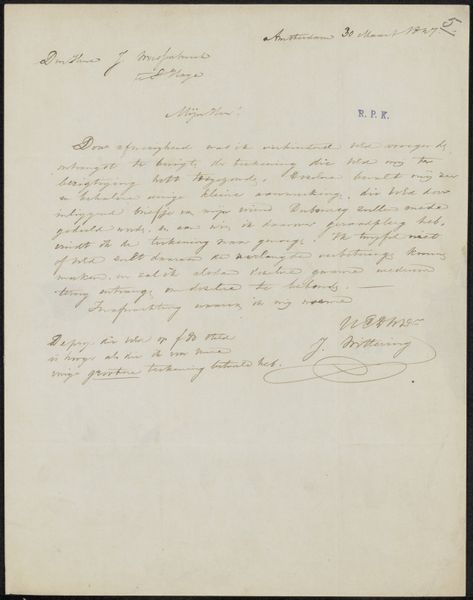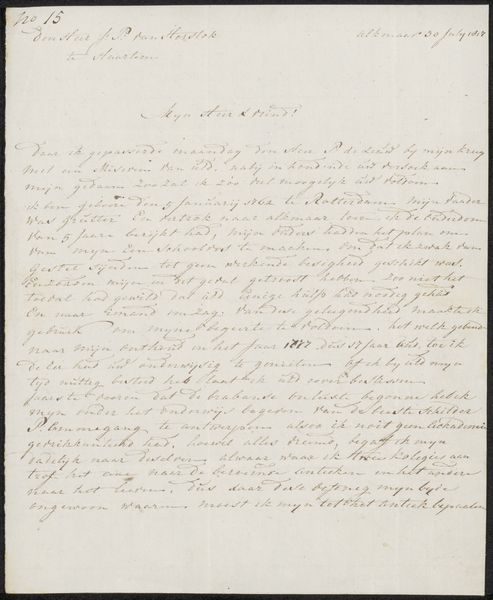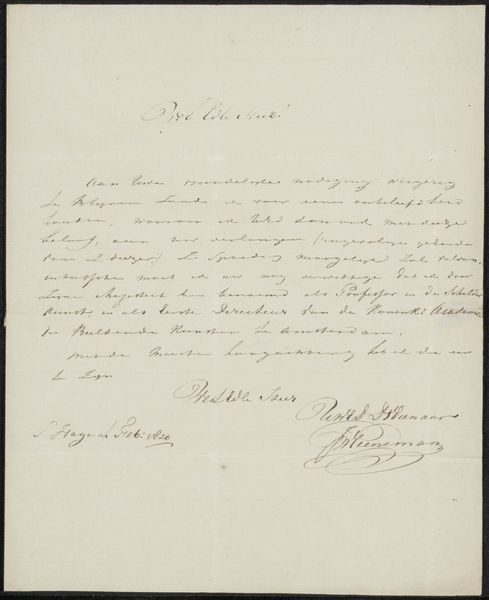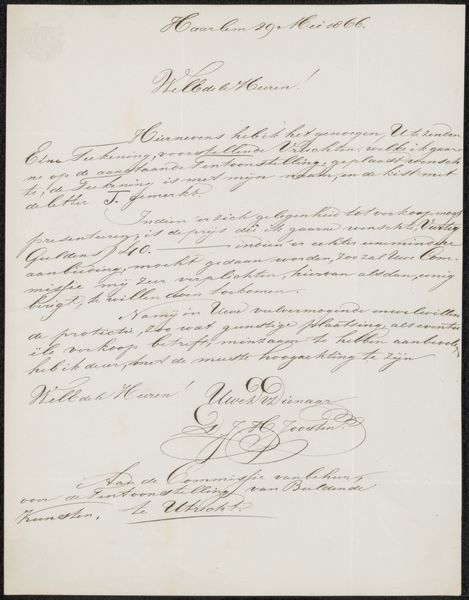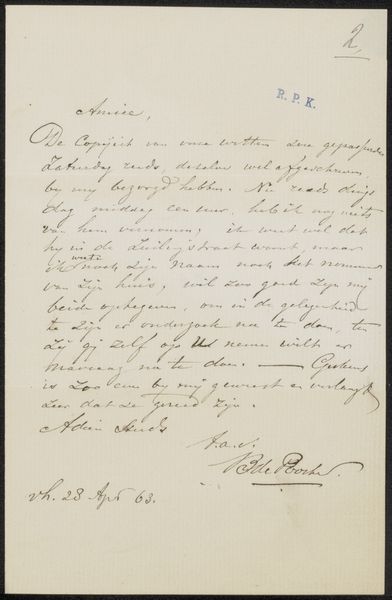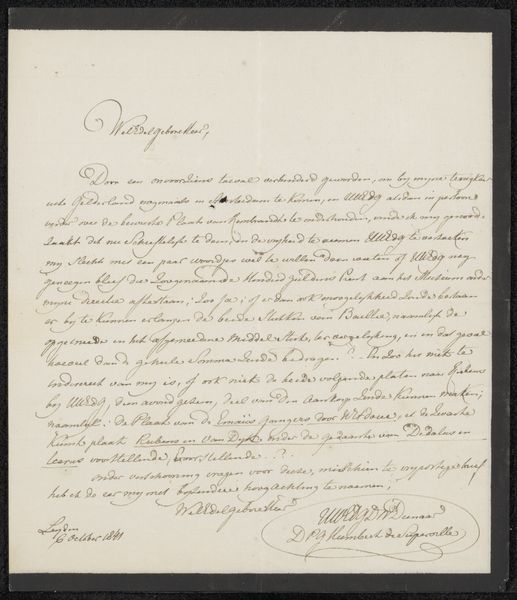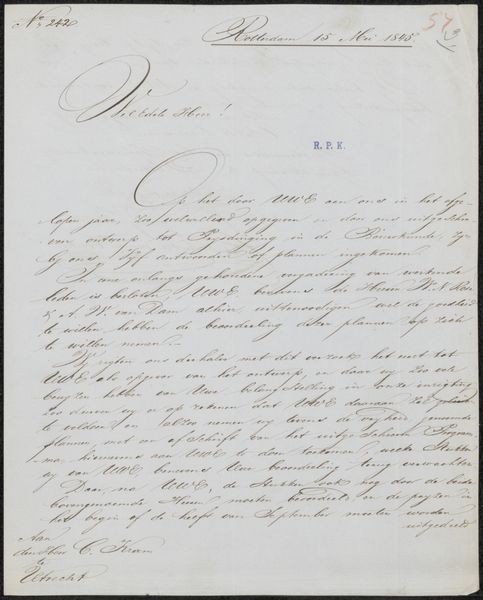
drawing, paper, ink, architecture
#
drawing
#
dutch-golden-age
#
paper
#
ink
#
architecture
#
calligraphy
Copyright: Rijks Museum: Open Domain
Editor: This is a letter from 1844, entitled "Brief aan Christiaan Kramm" – or "Letter to Christiaan Kramm." It is pen and ink on paper. It feels so fragile, this direct connection to the past. What jumps out to you? Curator: It resonates with the visual language of its time, drawing upon familiar, almost archetypal, forms. The script itself acts as a potent cultural symbol. Note how the elegant flourishes signal status and education, yet simultaneously convey a sense of formality that feels quite distant from our contemporary modes of communication. Editor: Formality, definitely! It's a world away from email. What else does the style of writing communicate? Curator: Consider how calligraphy in documents such as this performs an act of preservation. Beyond simply recording information, it enshrines it. The very act of careful inscription elevates the content, suggesting that the ideas contained within are worthy of posterity, a monument on paper, if you will. Editor: So, it's not just about delivering information, but about imbuing the message with importance and permanence? Curator: Precisely. Think about how written documents, before widespread printing and digital media, possessed a unique aura. This letter participates in that history, each stroke a testament to its cultural significance and the enduring power of symbolic forms. What do you think the act of writing by hand signals to a 21st century viewer? Editor: I think it shows carefulness and investment. Compared to sending a quick message, writing like this shows someone really took the time, making it all feel important. I never thought of calligraphy as that loaded, but it makes sense! Curator: And that realization is exactly where its enduring power lies, allowing a simple letter to speak across centuries.
Comments
No comments
Be the first to comment and join the conversation on the ultimate creative platform.
